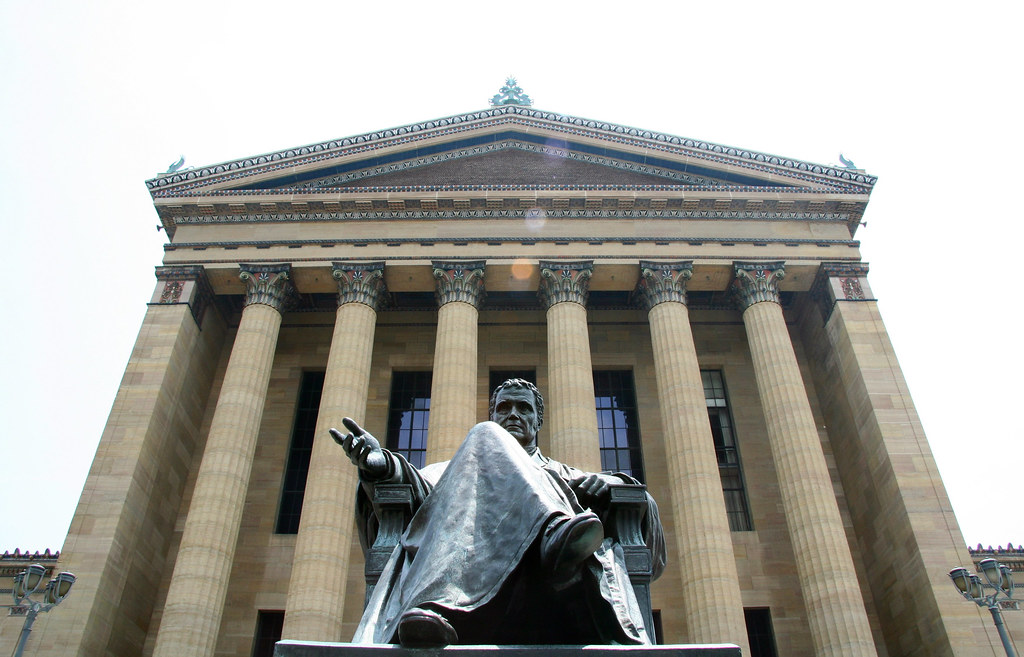Was early Supreme Court Justice John Marshall an originalist?
By Kristopher A. Nelson
in
September 2011
800 words / 4 min.
Tweet
Share
The question of whether John Marshall, Chief Justice of the United States Supreme Court from 1803-1835, was an originalist is, of course, anachronistic, as the term had not yet been invented during his lifetime. Still, given the ongoing controversy regarding judicial interpretation today, it’s an interesting question to ask about one of the foundational justices in American jurisprudence.
Please note that this post is from 2011. Evaluate with care and in light of later events.

The question of whether John Marshall, Chief Justice of the United States Supreme Court from 1803-1835, was an originalist is, of course, anachronistic, as the term had not yet been invented during his lifetime. Still, given the ongoing controversy regarding judicial interpretation today, it’s an interesting question to ask about one of the foundational justices in American jurisprudence.
Arguably, the original 1789 Constitution had produced a flawed judiciary: the court at the time of Marshall’s assumption of the role of Chief Justice in 1801 was “beleaguered by partisan strife and internal doubts about its role in the merging American government” (White 15). It was John Marshall’s interpretation of the federal court’s Constitutional role in 1803’s Marbury v. Madison that granted it equal status alongside the executive and legislative branches as he asserted, and justified, “an active, expansive role for the federal judiciary” (White 15). Marshall’s approach drew on a fundamental, though contradictory, belief of his time: “Man was fit to govern himself, but he could not be trusted to exercise self-government in a moderate and disinterested fashion” (White 18). That was the point having a republic and, similarly, a judiciary.
Despite his profound role in shaping the judiciary into an equal partner in American governance, Marshall did not believe judges “made” law in the modern sense (White 23). Instead, Marshall saw “legal principles as omnipresent and immutable”–and in this sense, the Constitution, once properly interpreted, would never change over time without revision (White 23). Judges should look to original texts and ascertain the meaning, but they must also infuse that with universal legal principles found beyond the text. He thus believed both in fixed meaning and in the judicial power to go “beyond the letter of the law” as written (White 24).
Marshall’s opinion in Gibbons v. Ogden reflected this dual approach. He began with a general principle: delegated powers could be “liberally construed” because the framers and the people “intended to use words ‘in their natural sense'” (White 32). If the sense over time had become imperfect, then one could clarify it by recourse to the document and by reference to “ordinary,” “common” and “natural” usage (White 32). In this way, Marshall embraced (in a sense, at least) originalism, while rejecting strict constructionism.
Of course, given how close Marshall was to the time of the original framing, he never had to deal with the more modern question of which ordinary meaning is more important: the one envisioned by the writers, or the one expected by people at the time of the case or controversy?
But the main difference between a modern originalist and Marshall, though, is his focus on the importance of omnipresent and immutable legal principles. These were more important even what was written, and formed the beginning point for Marshall’s typical decisions. He focused first on these general principles, then logically reasoned from there: his “original bias,” according to his colleague Story, “was to general principles and comprehensive views, rather to technical or recondite learning.” (White 13)
He drew, then, on two sources of law for his decisions:
- Universal and immutable natural rights, generally codified in the Constitution. Despite their codification, though, “American citizens had not given up those other rights conferred upon man in his natural state” (White 20). He thus grounded his rulings both in the Constitution and in “general principles which are common to our free institutions” (White 20). Marshall thus separates himself from true, modern originalists who might look to the words as written combined with the context of their writing. He would look at what was written, but then to universal ideals of law, not to the context or meaning attached by the writer.
- Precedents, although still important, were not as valuable to Marshall. On a practical level, access to English cases was limited by distance and publishing costs, and few cases had yet been decided yet in the United States. Additionally, the American system was distinctly different from the English one, and there were very limited cases that interpreted the American constitution (White 20). He returned to precedents later as more decisions accumulated, but always liked to ground them in broader principles.
In short, Marshall was simply not a modern judge at all. He spoke at times like an originalist, while at the same time emphasizing the power of the judiciary to “say what the law is” and not to merely defer to the other branches. But he looked to the “natural” meaning of words as they were intended to be used, and focused on finding and not on making law. He remains a powerful influence on the modern judicial system, even if no one today would reason in the way he did then.